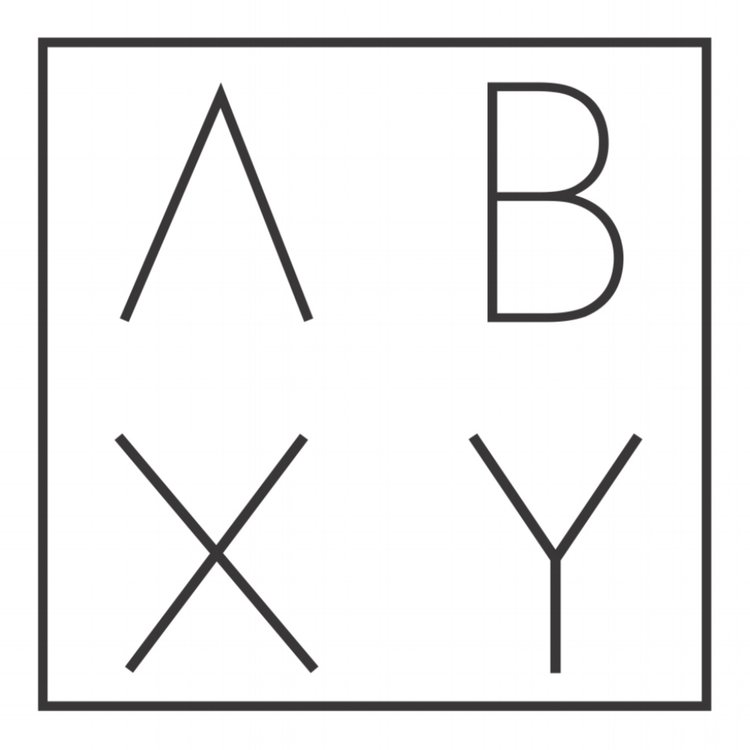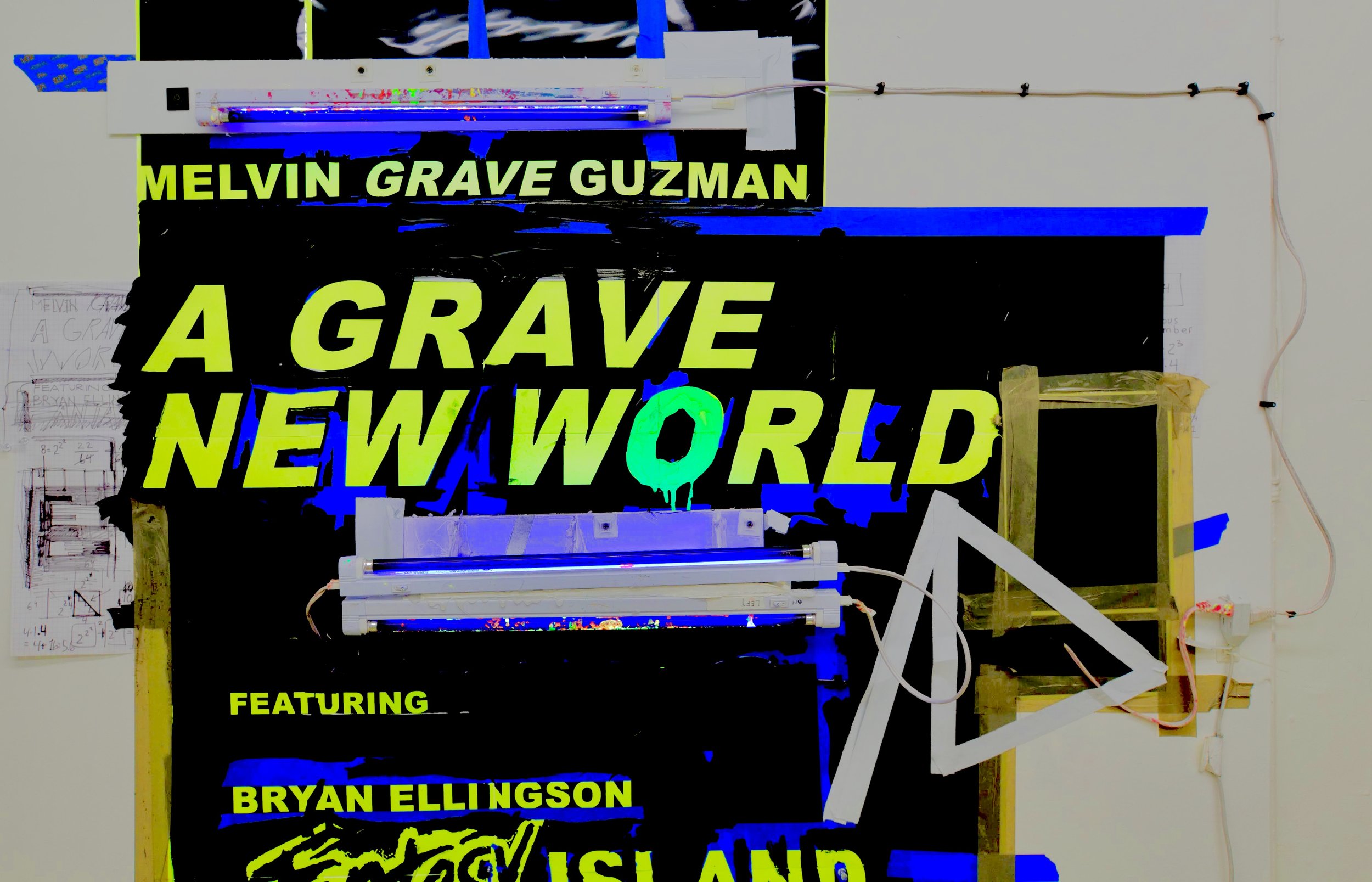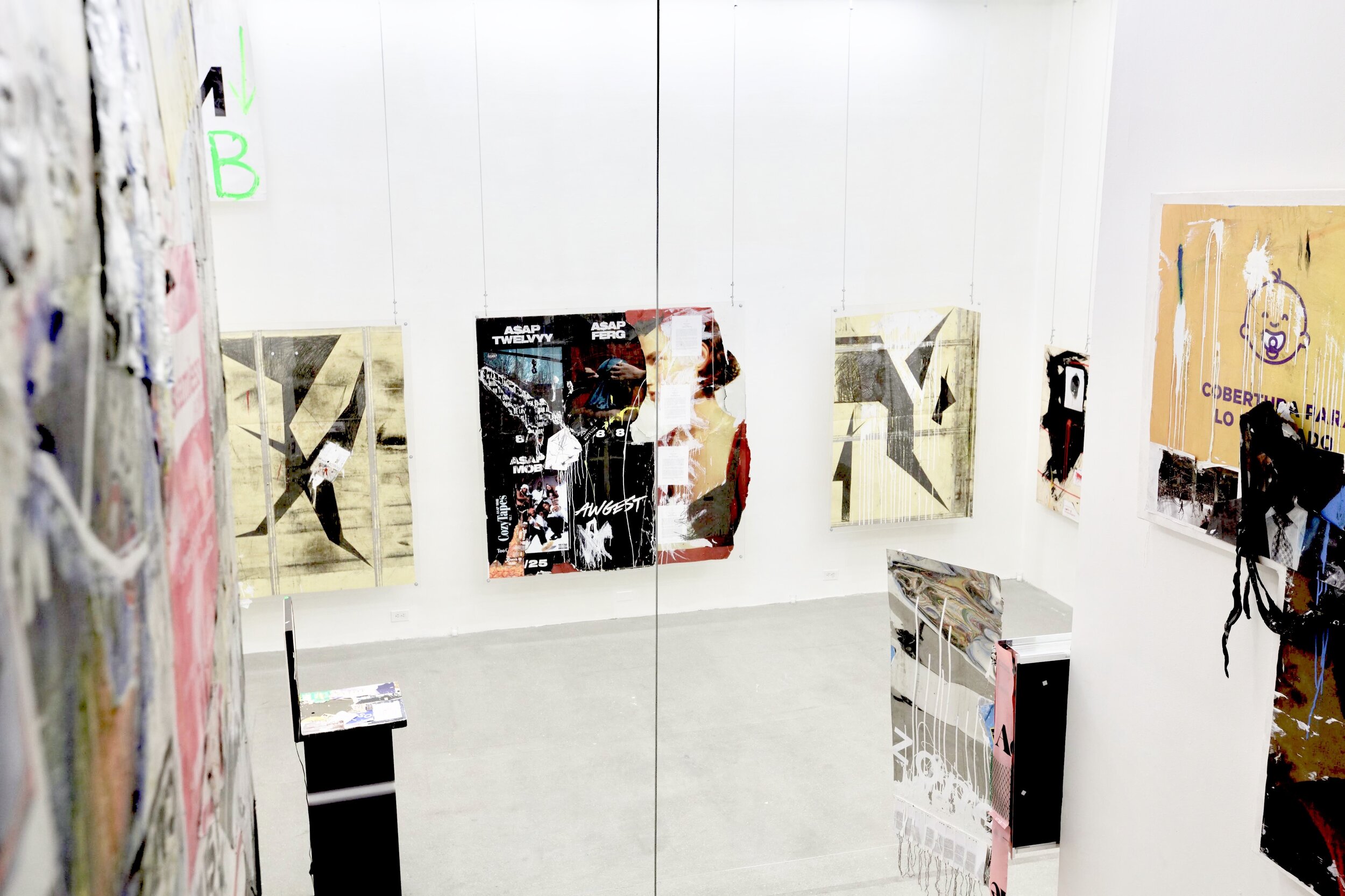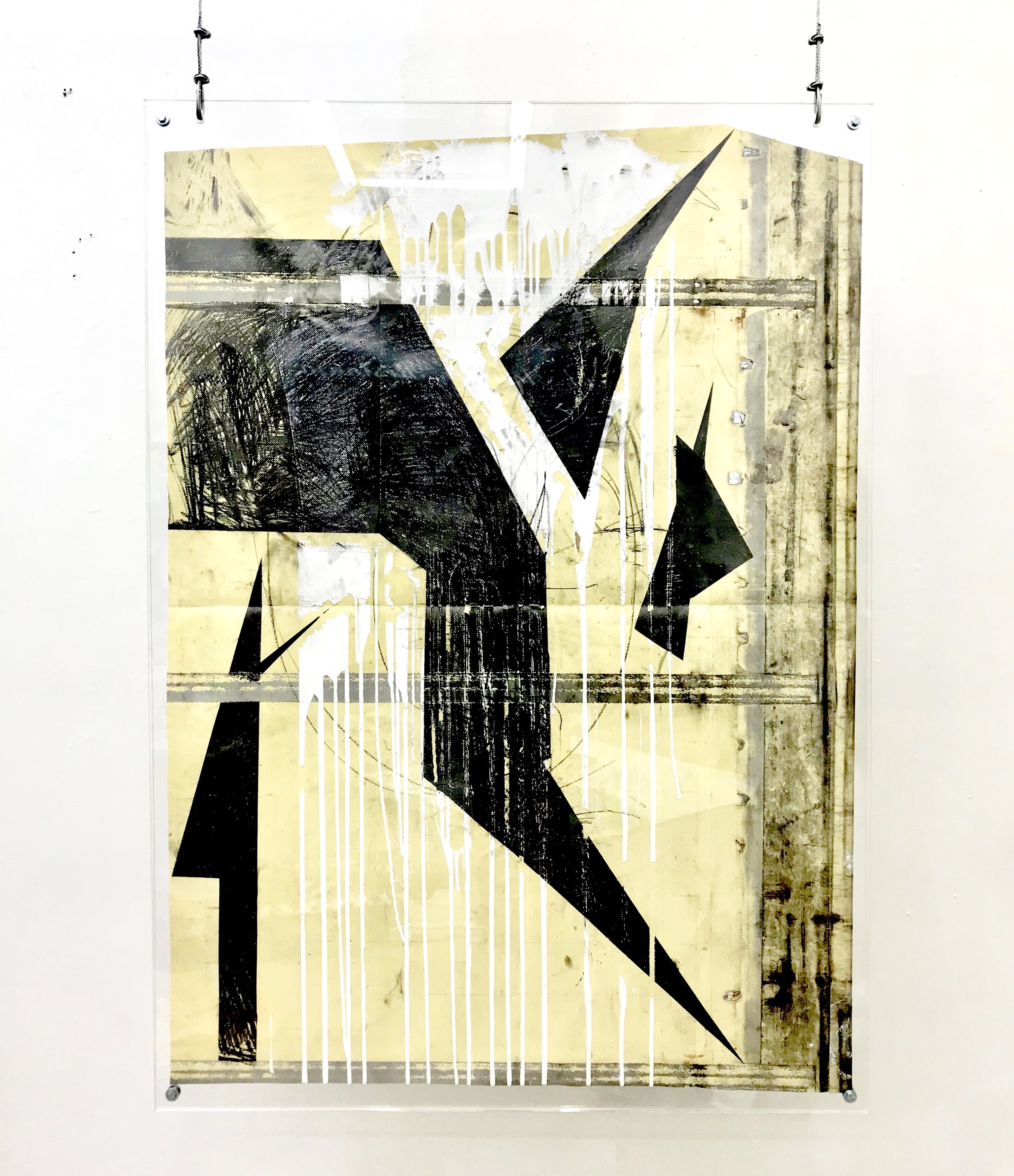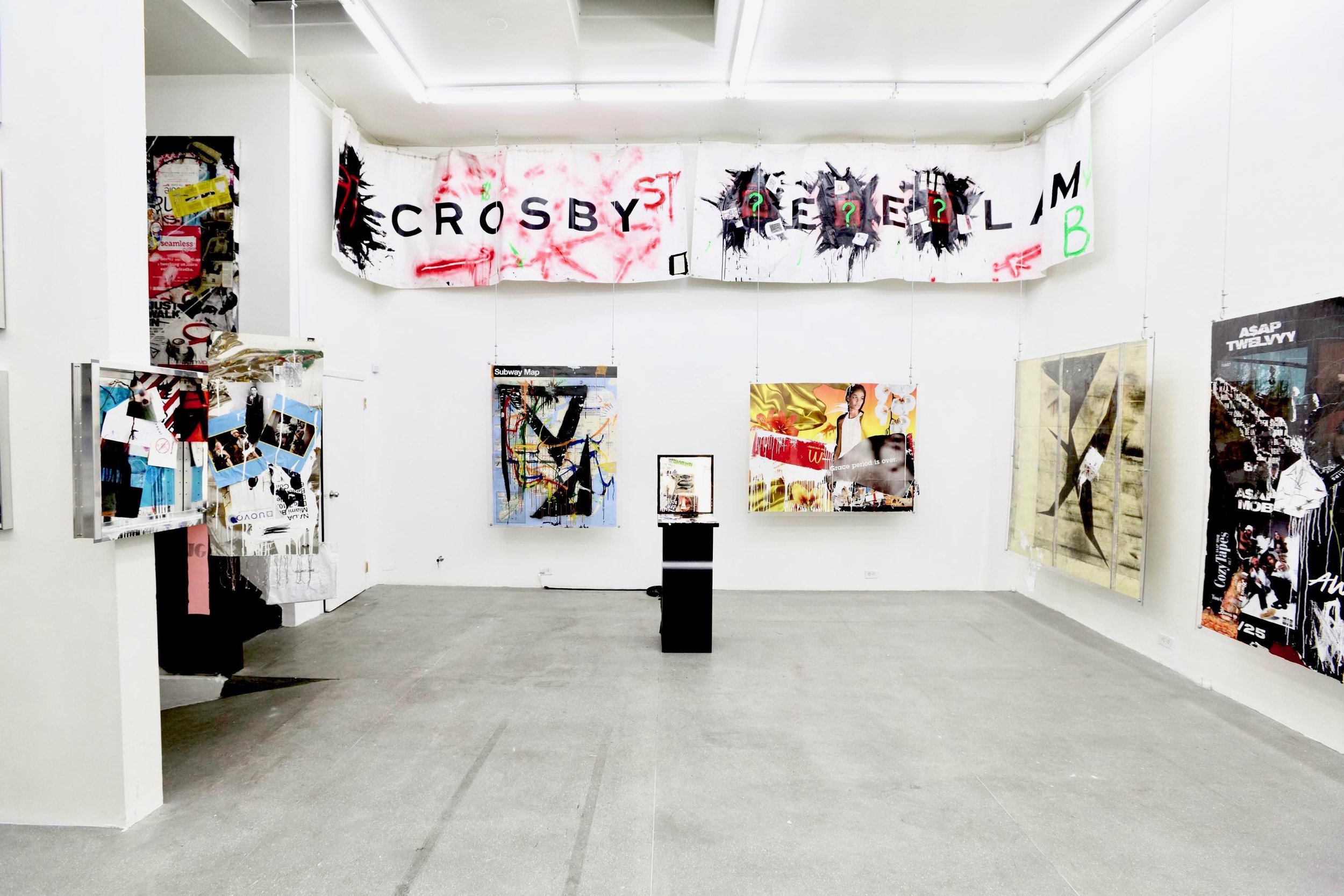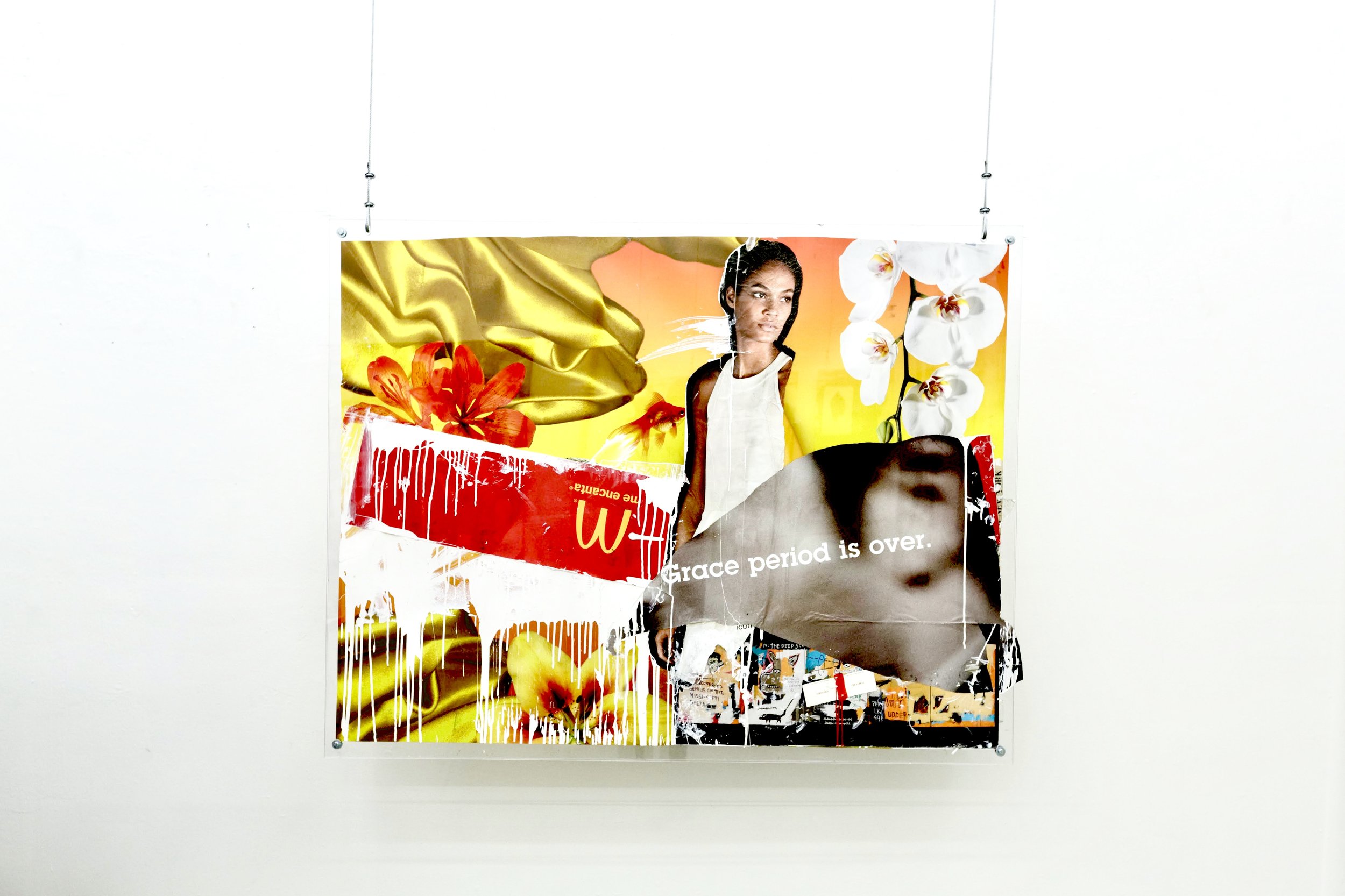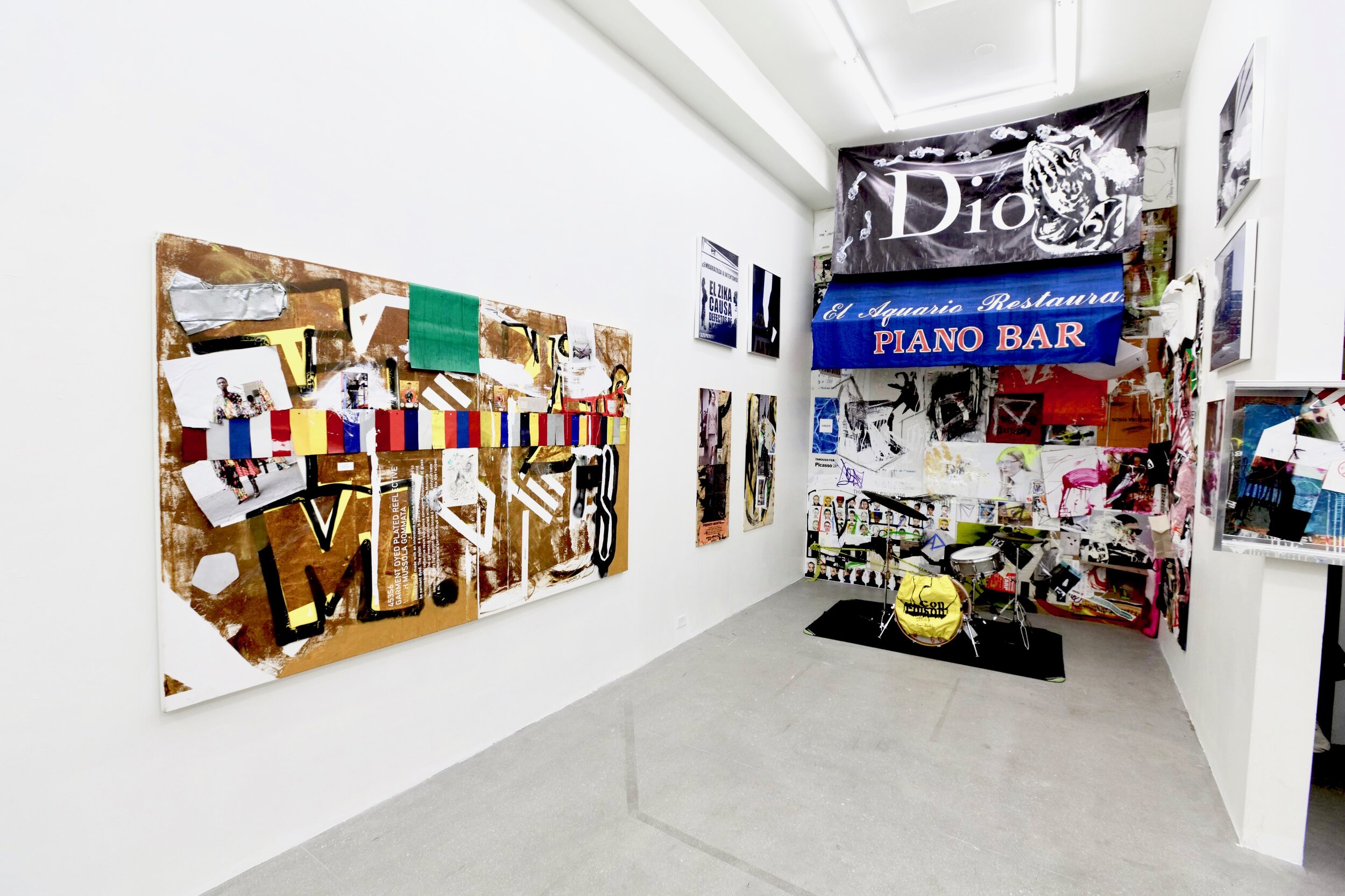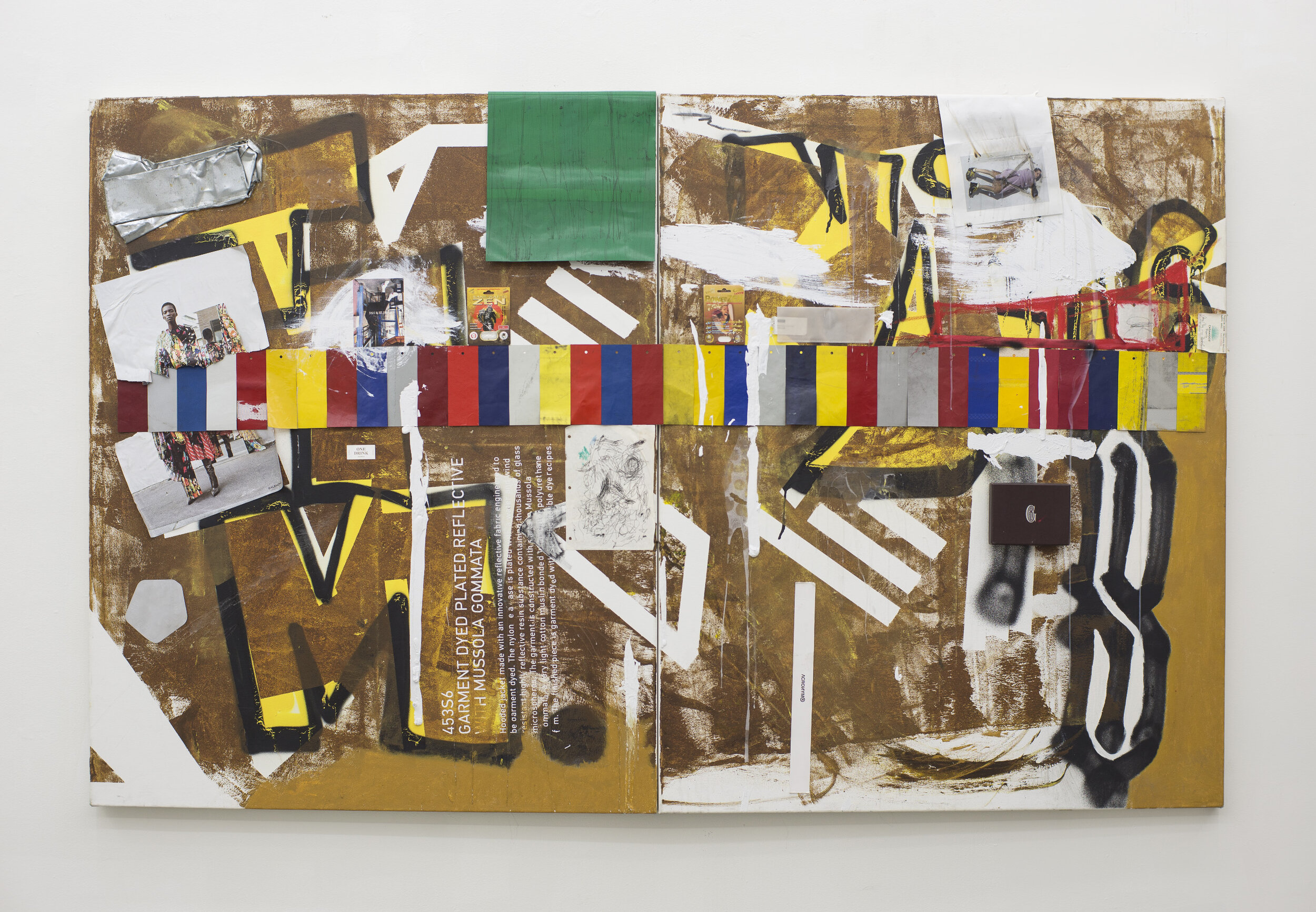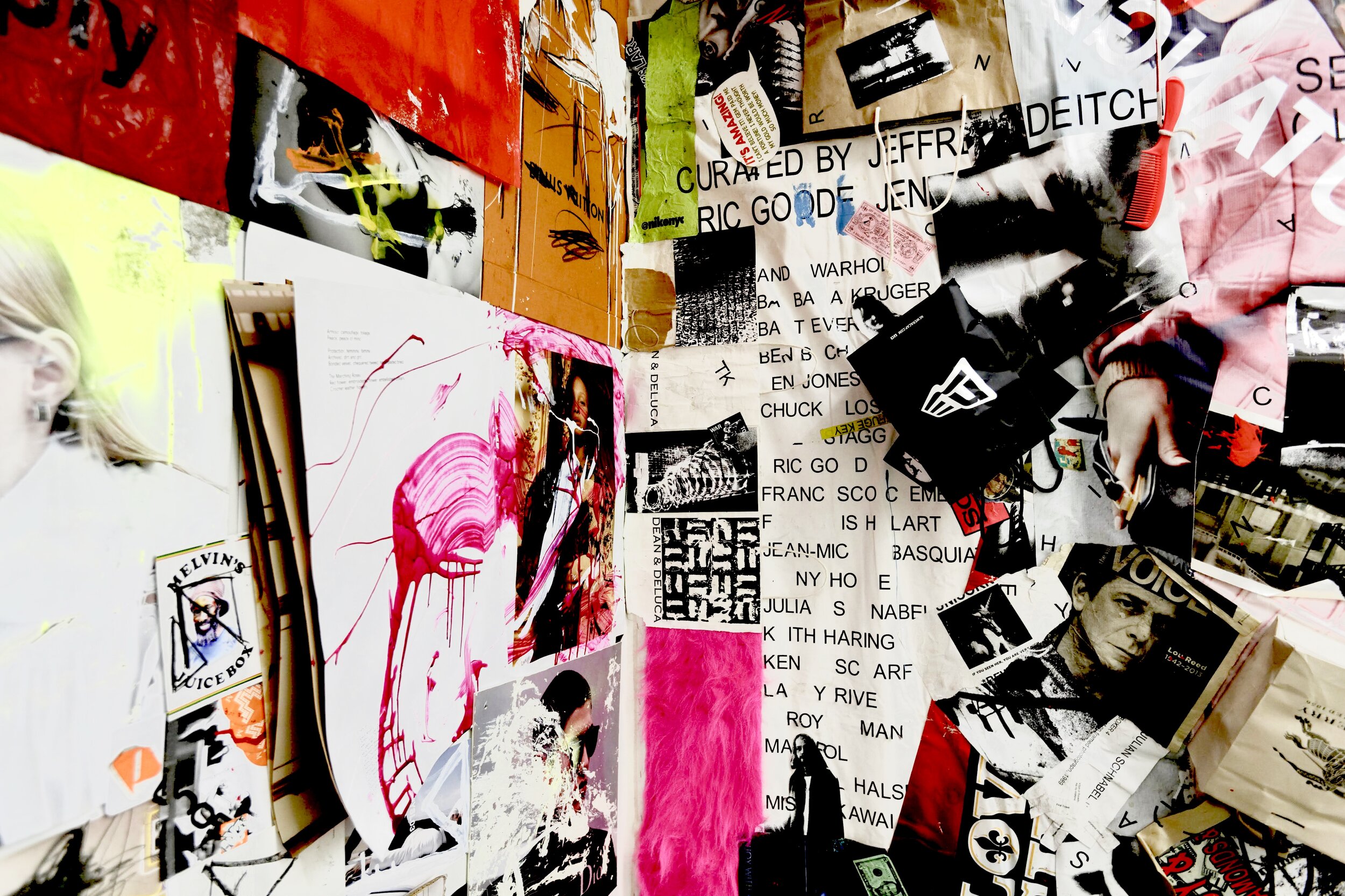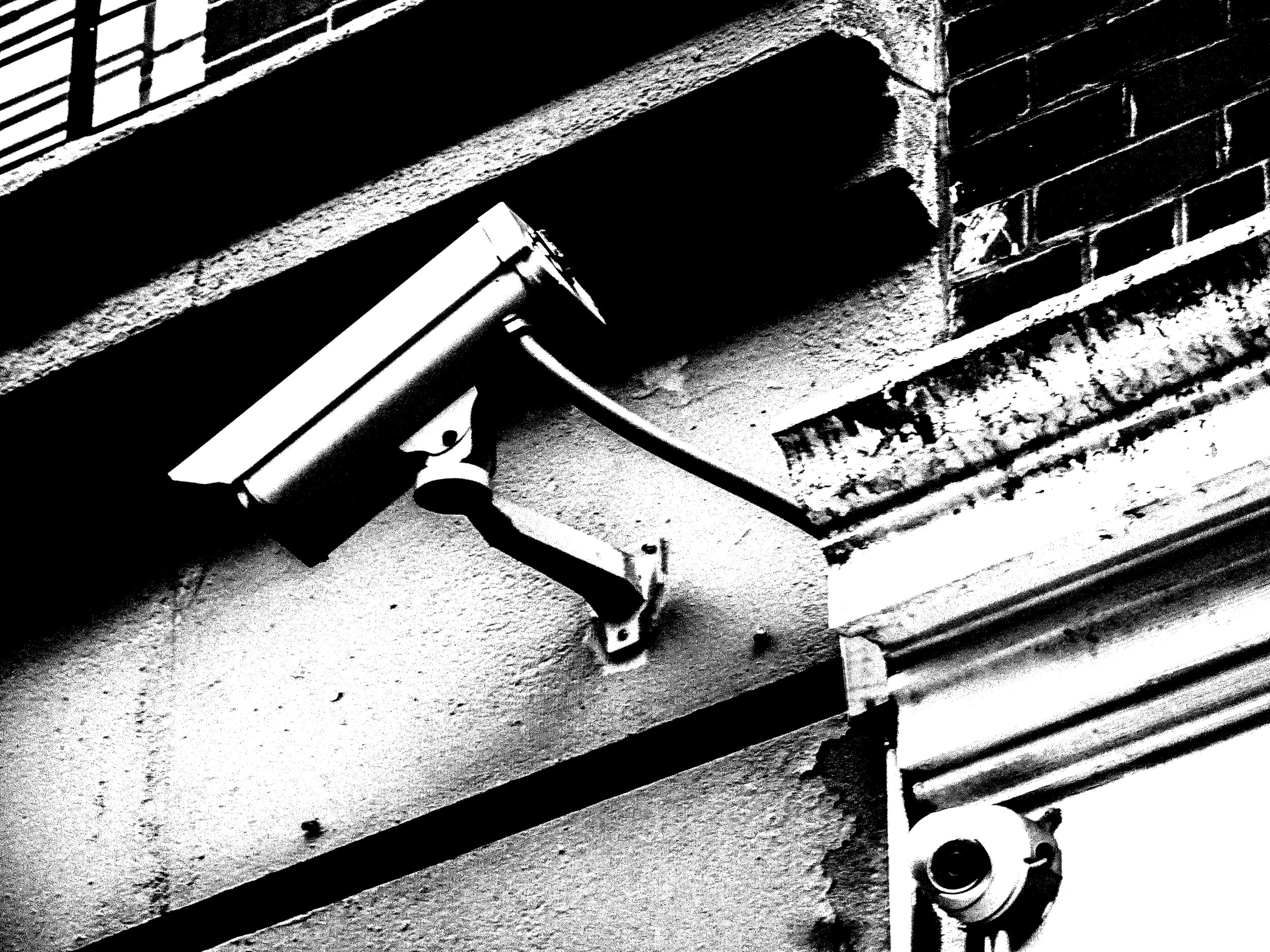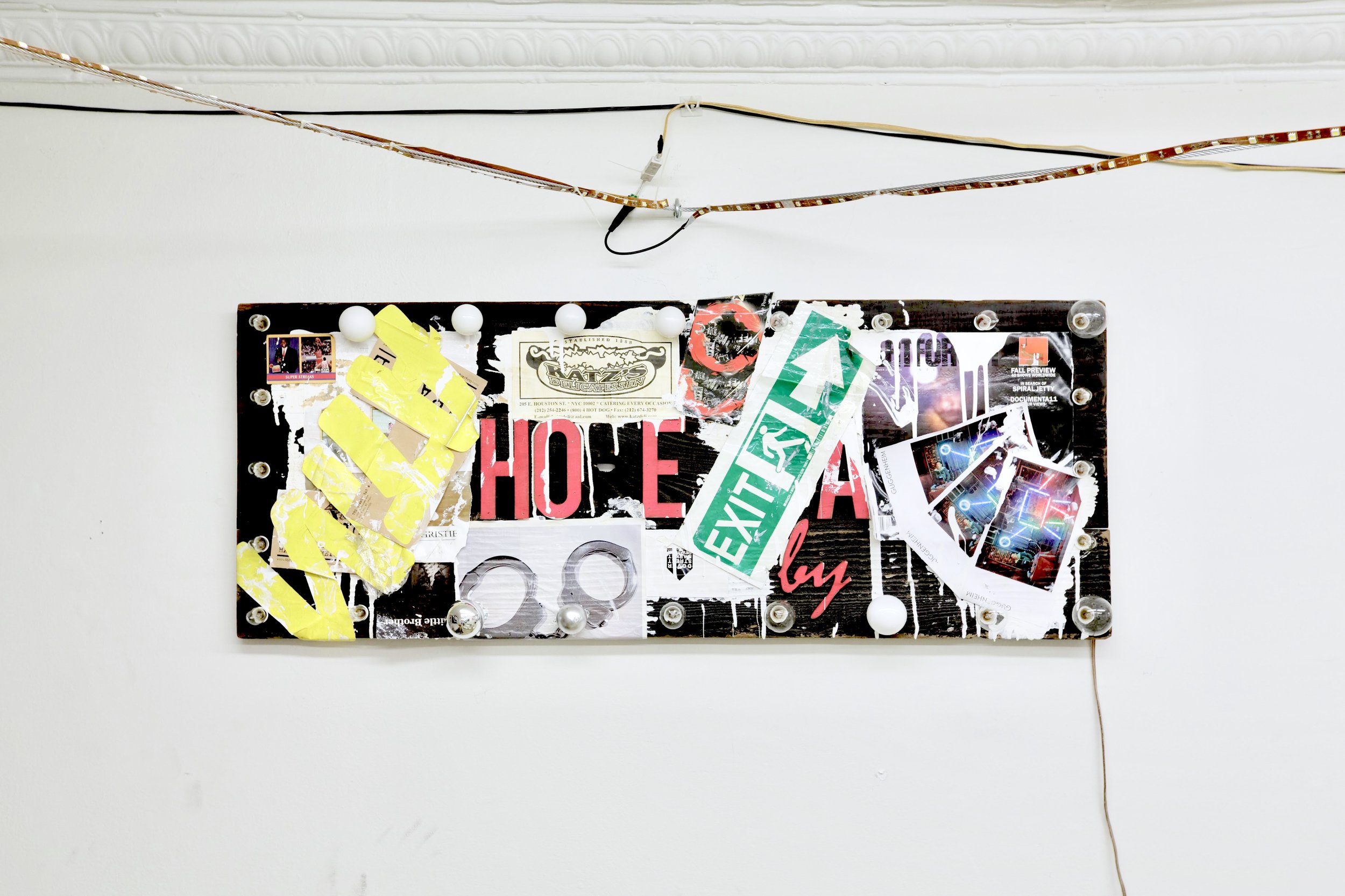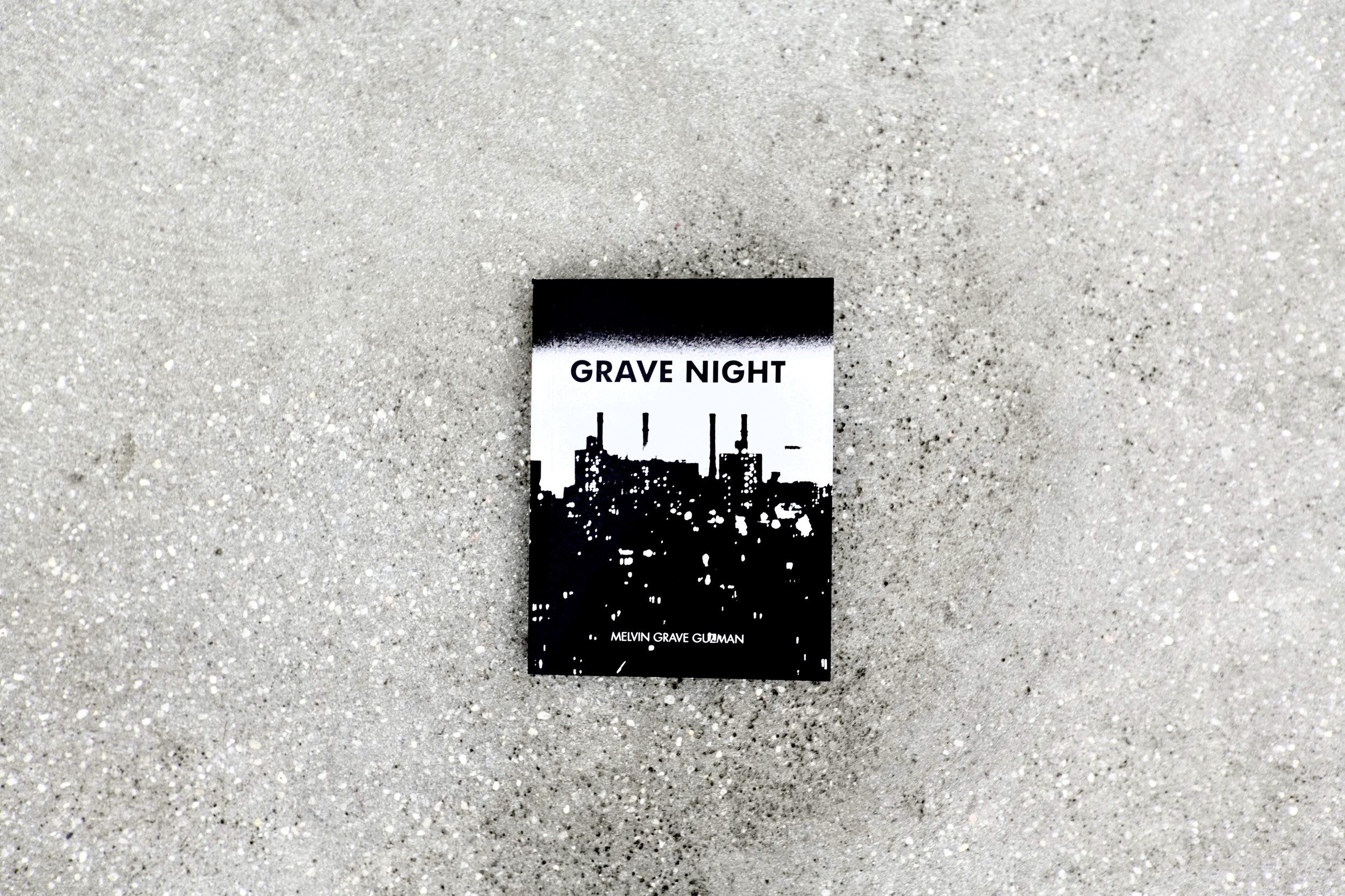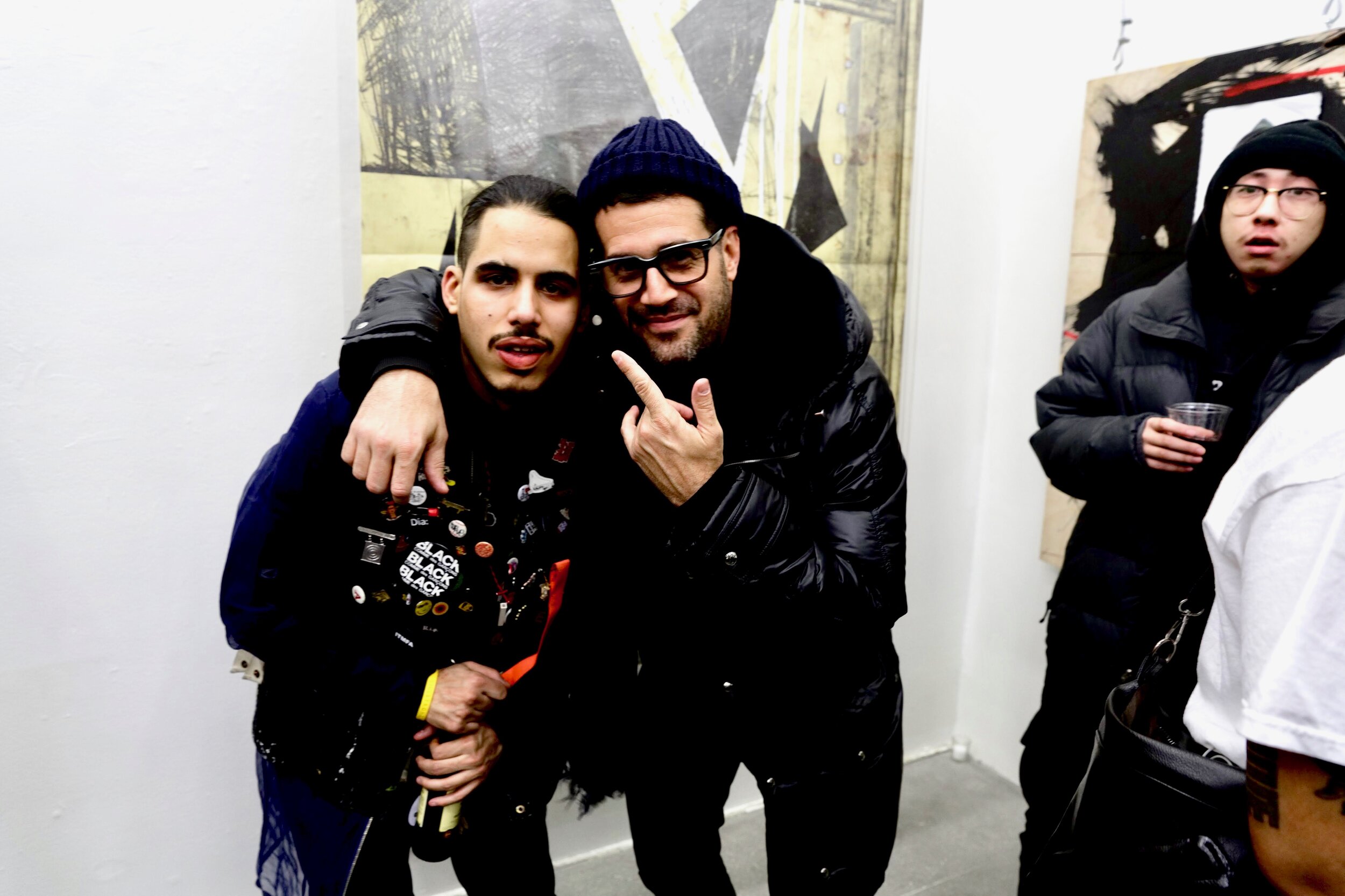A GRAVE NEW WORLD
SOLO EXHIBITION BY MELVIN “GRAVE” GUZMAN
PRESS RELEASE
FOR IMMEDIATE RELEASE:
ABXY presents:
A GRAVE NEW WORLD | Solo Exhibition by artist MELVIN “GRAVE” GUZMAN
OPENING COCKTAIL: TUESDAY JANUARY 16, 2018 | 6PM-9PM
EXHIBITION OPEN TO PUBLIC: JANUARY 17 – FEBRUARY 12, 2017
Location: ABXY LES | 9 Clinton Street | New York, NY 10002
NEW YORK, NY : On January 16th, 2018 ABXY introduced artist MELVIN (GRAVE) GUZMAN. The show, entitled A GRAVE NEW WORLD, runs through February 12th, 2018 and marks Guzman’s first solo exhibition. A GRAVE NEW WORLD has been co-curated by the artist and ABXY founder, Allison Barker. Barker discovered Guzman in 2016 and has been working closely with the artist ever since. The exhibition includes site specific installations by both Guzman and guest artist Brian Ellingson. On view in the upper gallery, Ellingson's work of light and sound is entitled, "Fantasy Island." Opening night, live music was provided by Onyx Collective. Event photographers included Erik Bardin, Marco Matute & Jean Andre Antoine. That evening the artist also revealed his much anticipated photo book: Grave Night, a limited edition of which are available for purchase. He will be hosting a book signing at the gallery Saturday, February 3rd, from 4PM-7PM.
Artist Melvin “Grave” Guzman with mentor Jose Parla, ABXY Gallery, January 2018
ABOUT THE ARTIST
Melvin “Grave” Guzman (b. 1989) lives and works in New York City.
MELVIN (GRAVE) GUZMAN (b. 1989) is a Harlem based artist working in photography, video, collage, and mixed-media. While Guzman pursues a range of distinct technical practices, his artwork consistently explores the oscillating relationship between city and self, environment and identity. Whether he’s sneakily snapping a photograph or carefully assembling found materials into a sprawling tapestry, the artist creates abstract portraits and landscapes, which convey the experience of city life today. To experience his work is to feel the familiar jolt of the subway heaving to a start and the landscape beginning to rush by, quickly blurring through dirty windows as the train picks up speed. His photos, videos, collages, and mixed media works are reflections not just of urban spaces, but our experience of those spaces, distilled by the passing of time.
No matter the medium, Guzman’s work elicits the romanticism & idealism, anxiety & depression experienced by a generation of young people looking into an ominous, once distant future, now rapidly approaching. As technology’s continuous development thrusts us into the future, our time to save the environment dwindles and cultural tensions escalate across micro and macro communities around the world. In this increasingly small moment called “the present”, we find ourselves soaking in a kind of “nostalgia for now” however tense or conflicted it may be. By employing the ennobling quality of time as an aesthetic, Guzman romanticizes contemporary human life into a drama of Baroque proportion taking place in real time. With work that seems to foreshadow our inevitable demise, the artist suggests that if we can’t find a way to save ourselves – (and quick) – whatever fragments of civilization we leave in our wake, will tell the future’s archaeologists the story of our collective self-destruction.
PHOTOGRAPHY
If your life were to flash before your eyes, it might appear like a Snapstory of Guzman’s photographs. In images that depict the fleeting, high impact visual moments that characterize city life today, the artist captures the osmosis between urban jungles and their inhabitants. The world’s capitals shine through Grave’s portraits of urban youth, while his cityscapes tell the stories of the communities that built them.
Whether working in digital or analog photography, the artist always edits his images to achieve the same goal: by eliminating any gray tones in a photograph, he transforms his subjects into pure black and white articulations of form. To preserve the full force of this gesture in the final work, the artist prints images using a radiology machine (unlike typical printers, radiologists don’t skimp on black ink). The effect is both evidentiary and nostalgic. In Guzman’s eerily dreamy photographs, glimpses of the landscape appear like urban x-rays while unsuspecting human subjects emerge as portraits of friendly ghosts.
MONUMENTAL MIXED MEDIA
If Guzman’s photos give the impression of flash-backs, his mixed media pieces have the effect flash-forwards. He begins this work by collecting source material – stickers, posters, flyers or discarded luxury advertisements found in the debris of cities around the world. Whether he compiles these elements into a collage or emblazons an individual advertisement with the painted drips, splatters, and happy accidents signature to his graffiti style – the artist takes great care in embellishing, arranging, and layering his materials. He sees any existing rips, tatters, or smudges he might encounter in his source material as deliberate aesthetic contributions to the composition and he considers them attentively when adding his own marks to their scrappy surfaces.
Each an ode to organized chaos, these pieces often confuse the viewer’s sense of time and place, probing one to ask: where, when, why, and how a given image came to be constructed. What has been contributed by the artist? What’s original? What’s natural? A disorienting encounter. Guzman’s mixed media work has the transporting effect of beholding an ancient relic: each piece feels immediately close in time and place – then, almost as suddenly, far away, otherworldly, and just out of grasp. Standing in front of his largest works, the viewer can imagine they’ve been transported to the ruins of some contemporary urban center. In this post- human future, the footsteps of a lone teenage alien break the silence. Shaking a can of spray paint, our imaginary extra-terrestrial prepares to tag the crumbling monuments of consumer culture with his dystopian graffiti. And a clinking echo bounces across the rubble.
THE PHANTOM
Like a hidden Micky, the phantom character often appears in Guzman’s work. The artist first created the abstract figure by chance during the execution of a performance art piece. Inspired by a rapid series of life-changing events in the artist’s biography, the performance featured the Guzman acting as the hands of a clock, forming a large charcoal ring around him. At the center of the circle, the artist created another expressive linear abstraction on scrap of Givenchy promotional material. The resulting (vaguely triangular) image, now known as the phantom, has come to signify the presence of good and evil, dark and light, yin and yang when and wherever it emerges in the artist’s work. “The phantom was created when I got a second chance at life, so the phantom represents that first life,” says Guzman of his haunting signature, “But it’s still a part of me, it’s always with me. Like the good and the bad, you can’t know one without the other. So the phantom is about that kind of duality.” For more on the origin story of the phantom, see interview on the artist’s page (bottom).
